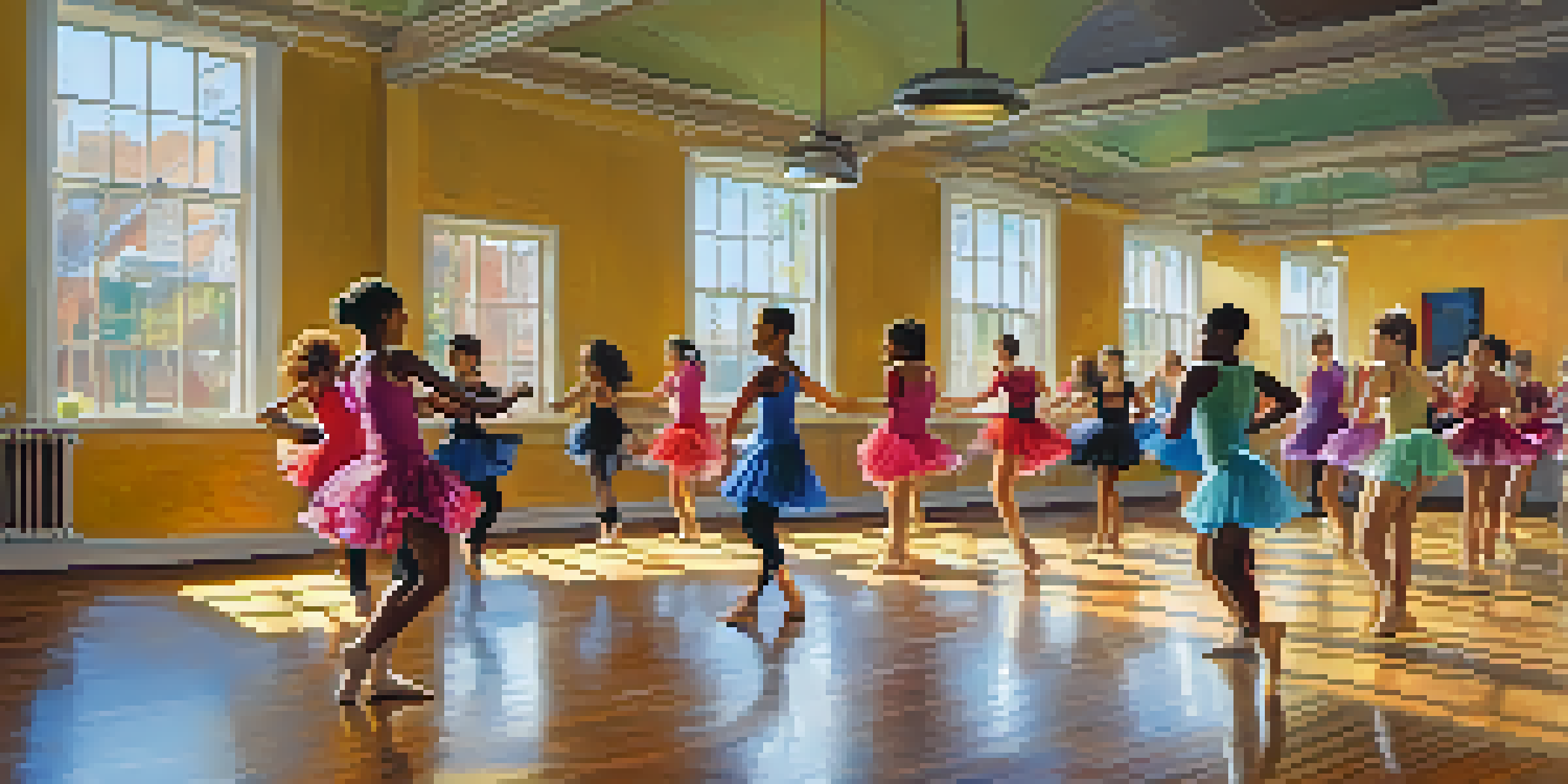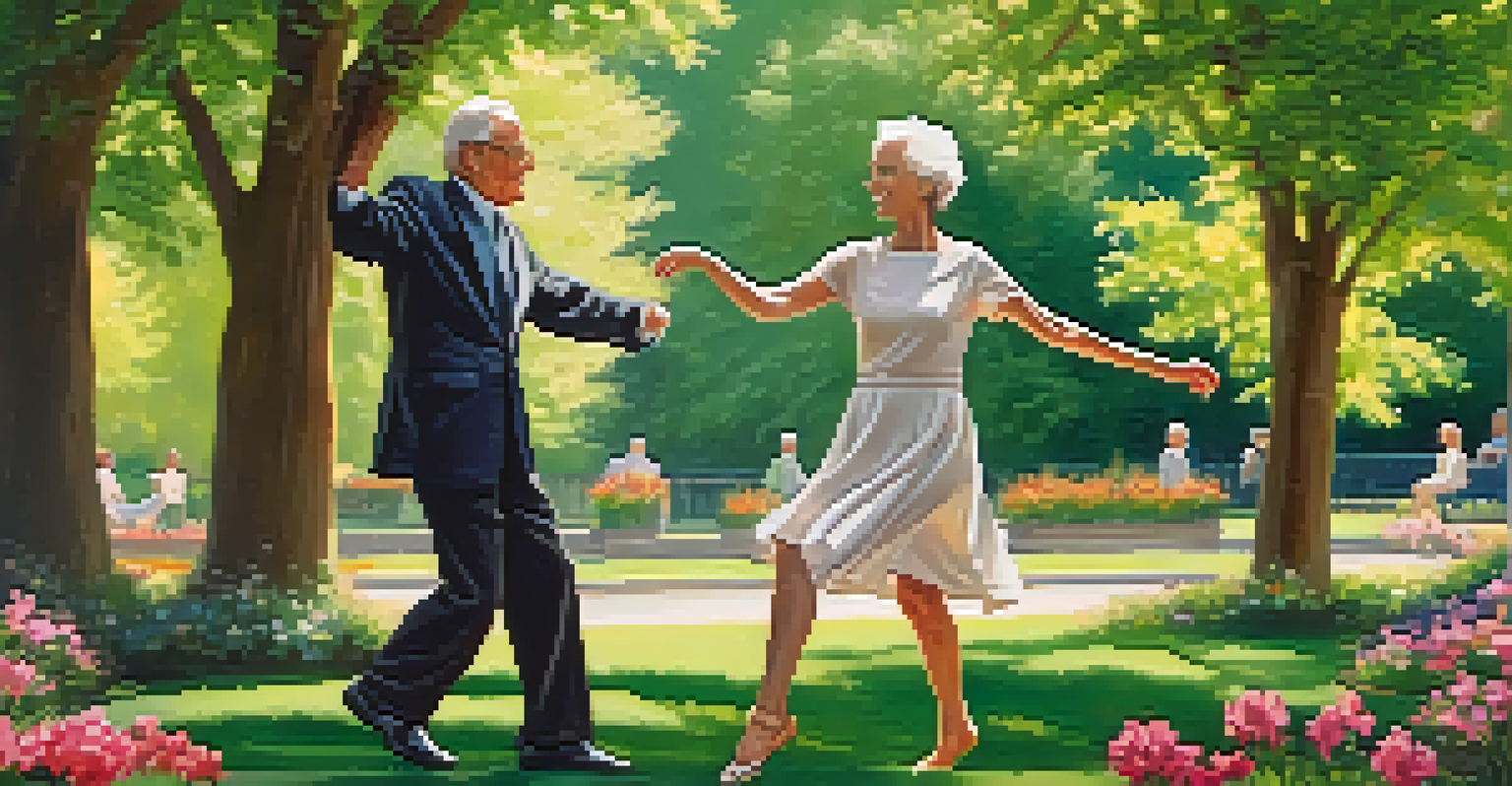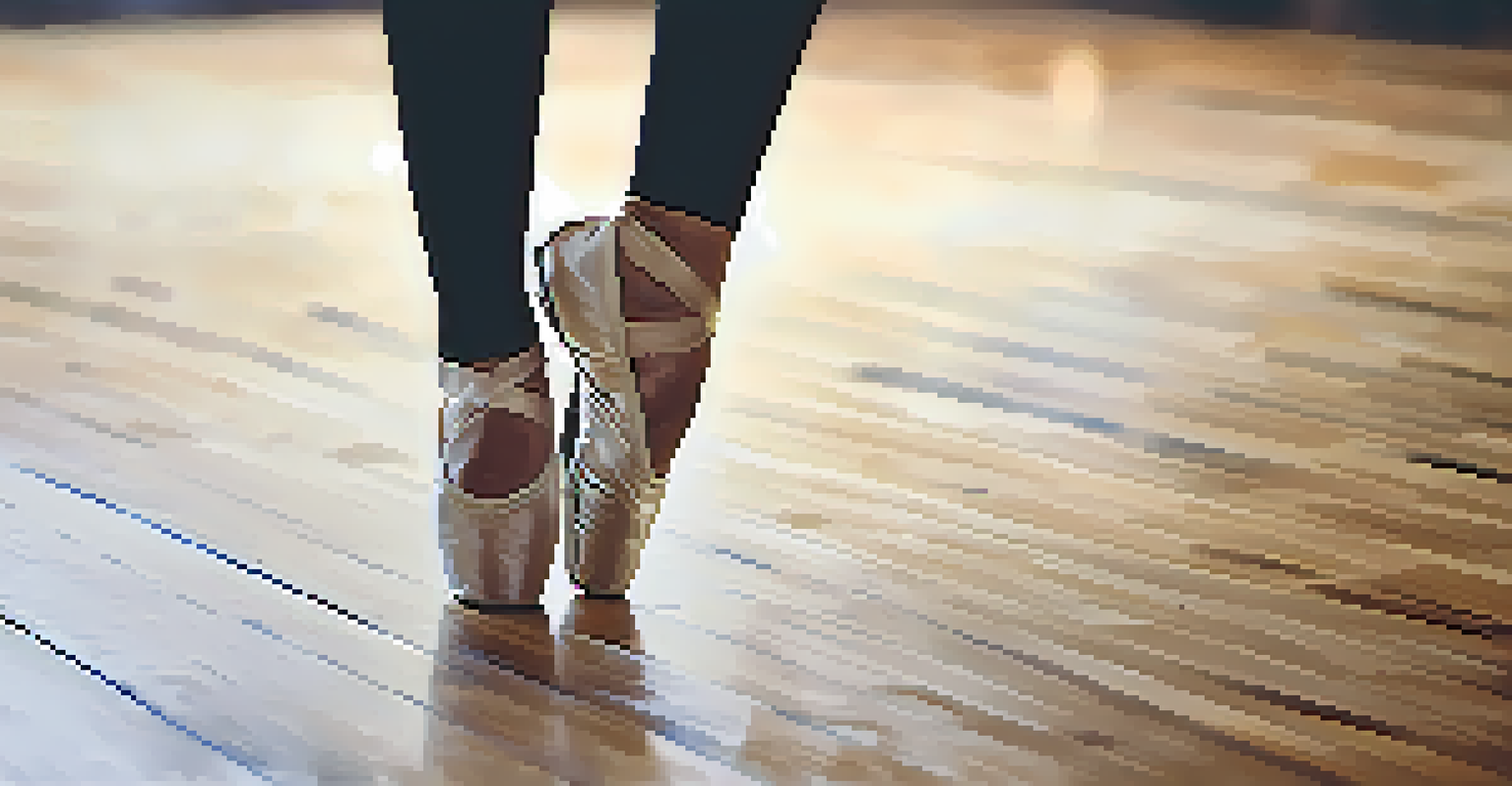Dance and the Brain: A Review of Current Research Studies

The Relationship Between Dance and Cognitive Function
Recent studies have shown that engaging in dance can significantly enhance cognitive function. Activities that involve rhythm, coordination, and memory, such as learning dance routines, stimulate various brain regions. This engagement leads to improvements in areas like attention, problem-solving, and even spatial awareness.
Dance is the hidden language of the soul.
For example, a study published in the journal 'Frontiers in Aging Neuroscience' indicated that older adults who participated in regular dance classes experienced slower declines in cognitive abilities compared to those who did not dance. The act of learning new steps and routines keeps the brain 'young' by promoting neuroplasticity—the brain's ability to adapt and form new connections.
Moreover, the combination of physical activity and social interaction in dance creates a unique environment for cognitive enhancement. This dual engagement is essential, as both physical exercise and social connections have been linked to better mental health and cognitive longevity.
Dance as a Tool for Emotional Regulation
Dance is not just a physical activity; it also serves as a powerful tool for emotional expression and regulation. Engaging in dance allows individuals to channel their emotions creatively, which can lead to improved mood and reduced anxiety. Research has shown that dancing releases endorphins, the body's natural mood lifters.

A compelling study highlighted how participants in dance therapy reported lower levels of stress and anxiety after sessions. The rhythmic movement combined with music provides a cathartic outlet, allowing individuals to express feelings that might be difficult to articulate verbally.
Dance Boosts Cognitive Function
Engaging in dance enhances cognitive abilities, including attention and memory, by stimulating various brain regions.
Furthermore, dance can foster a sense of community and belonging, which is vital for emotional well-being. Whether in a group class or a social dance setting, these connections can help mitigate feelings of loneliness and isolation, further enhancing mental health.
Neurobiological Effects of Dance on the Brain
From a neurobiological perspective, dance activates multiple brain regions responsible for motor control, coordination, and sensory processing. When dancing, the brain must integrate sensory information, planning, and timing, which enhances overall brain function. This multi-tasking can lead to increased neural connectivity.
To watch us dance is to hear our hearts speak.
Research using brain imaging techniques has revealed that dancers often exhibit greater grey matter density in areas associated with movement and coordination. This suggests that regular dancing can physically alter brain structure, making it an excellent activity for maintaining brain health.
Additionally, the interplay of rhythm and movement in dance has been linked to improvements in areas like memory and learning. As dancers memorize steps and routines, they engage their working memory, which can translate to enhanced cognitive abilities in everyday tasks.
Dance and Memory Enhancement in Aging Populations
As we age, maintaining cognitive function becomes increasingly important, and dance can play a pivotal role in this process. Studies have indicated that older adults who participate in dance lessons show improved memory and recall abilities. This is likely due to the complex mental strategies involved in learning and remembering dance sequences.
In one notable study, seniors who engaged in regular dance practice scored higher on memory tests than their sedentary counterparts. The combination of physical exercise, social interaction, and mental challenges presents a holistic approach to enhancing brain function in aging populations.
Dance Aids Emotional Well-Being
Dance serves as a powerful tool for emotional regulation, helping to reduce stress and anxiety through creative expression.
Moreover, dance can serve as a preventive measure against cognitive decline, such as Alzheimer’s disease. By regularly stimulating the brain through dance, individuals may be able to preserve cognitive abilities for longer periods, making it a beneficial activity for lifelong brain health.
Social Connectivity Through Dance
Dance is inherently social, and this aspect brings numerous benefits for mental health. Engaging in group dance activities fosters connections among participants, creating a sense of community and shared experience. These social bonds are vital for emotional well-being and can reduce feelings of isolation.
Research has shown that social dancing can lead to improved mood and increased feelings of happiness. When individuals dance together, they release oxytocin, often referred to as the 'love hormone,' which helps strengthen social bonds and promotes trust.
Additionally, the shared experience of learning and performing dance can create lasting friendships and reduce stress. This social interaction not only enhances the enjoyment of dance but also contributes significantly to overall mental health.
The Impact of Music on Dance and Brain Function
Music plays a crucial role in the dance experience, influencing both the physical and cognitive aspects of movement. The rhythm and melody can enhance motivation, encouraging individuals to engage more fully in their dancing. Studies suggest that music can activate brain areas related to emotions, memory, and motor control, further enriching the dance experience.
Moreover, the combination of music and movement has been shown to improve coordination and timing. Dancers often rely on musical cues to execute their movements, which strengthens the brain's ability to process auditory information and respond with appropriate physical actions.
Social Connections through Dance
Participating in dance fosters social bonds, which are vital for emotional health and can alleviate feelings of isolation.
This synergy between music and dance creates a unique cognitive workout. As dancers learn to synchronize their movements with the rhythm, they develop skills that can benefit various cognitive functions, including attention, memory, and even creativity.
Therapeutic Benefits of Dance for Mental Health
Dance therapy has gained recognition as an effective therapeutic tool for various mental health issues. This practice uses movement to promote emotional, cognitive, and social integration, making it particularly beneficial for individuals facing challenges such as depression or anxiety. Through dance, participants can explore their emotions and experiences in a safe, supportive environment.
Research supports the effectiveness of dance therapy, showing significant reductions in symptoms of mental health disorders among participants. The expressive nature of dance allows individuals to release pent-up emotions and fosters a sense of empowerment and control over their lives.

Additionally, dance therapy encourages mindfulness and self-awareness, as participants become more in tune with their bodies and emotions. This heightened awareness can lead to greater emotional regulation and resilience, equipping individuals with tools to manage stress and anxiety in their daily lives.
Conclusion: Embracing Dance for Brain Health
In conclusion, dance is more than just a form of artistic expression; it's a powerful tool for promoting brain health and enhancing cognitive function. With numerous studies highlighting the benefits of dance, it's clear that incorporating movement into our lives can lead to significant improvements in mental and emotional well-being.
Whether you're a seasoned dancer or a newcomer, the important thing is to get moving and enjoy the process. The social connections, emotional expression, and cognitive challenges that come with dance can create a rich tapestry of benefits for the brain.
So, lace up those dancing shoes! Embrace the rhythm and let the music guide you to a happier, healthier brain.